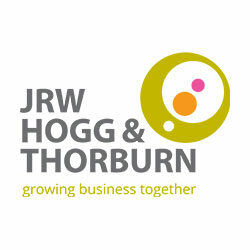New auto-enrolment warnings
The Pensions Regulator is concerned that employers may have ignored vital routines and compliance activities during the pandemic. What are the key areas to focus on now?
In the early days of the pandemic The Pensions Regulator (TPR) relaxed its compliance stance, recognising the pressure businesses were under, but it’s now a return to business as usual in terms of pension responsibilities. What are the key areas of attention for employers?
Pensionable pay
If you made changes to your payroll software to calculate furlough pay on a specific subset of allowable pay elements, did you ensure that this did not impact pensionable pay? The two are mutually exclusive. Pensionable pay is governed by the scheme rules and must be either:
Qualifying earnings: from the lower earnings limit to the upper earnings limit with all pay elements included.
• Tier 1: pensionable earnings must be equal to, or more than, the worker’s basic pay from pound one.
• Tier 2: total pensionable earnings must be at least 85% of total earnings.
• Tier 3: includes all earnings in pensionable pay (the total contribution is 7% not 8% recognising the wider scope of pensionable pay).
Furlough pay and monies received under the Kickstart scheme are subject to pension contributions based on the scheme rules, even though the government only funded the statutory minimum pension contributions for a period at the start of the pandemic.
Reduced contributions?
If your scheme rules allow, employees could have chosen to voluntarily reduce their contributions below the statutory minimum, but employers must not encourage employees to do this. If they do this voluntarily it may mean that the employer does not have to pay any employer contributions.
Re-enrolment
There was no time extension to when re-enrolment must take place. It remains three months either side of the last re-enrolment date, with postponement not able to be applied to the re-enrolled cohort. Once re-enrolment has taken place, a re-declaration of compliance must be submitted. For many small employers the first re-enrolment exercise occurred during 2020 as they auto-enrolled in 2017 so this is the first time they have carried out this activity. If employees took a permanent reduction in hours/pay due to coronavirus and opted-out of pension membership they will not need to be auto re-enrolled if they aren’t earning £10,000 p.a. or more at the re-enrolment date, although they can voluntarily opt-in at any time. If an employee has voluntarily reduced their contributions during the pandemic and that was more than twelve months prior to their re-enrolment date they will revert to the statutory minimum on re-enrolment and will have to voluntarily opt-down down again if they wish to.
Minimising scams
Employees cannot access their pension pot earlier than their 55th birthday without incurring an unauthorised access charge. Scammers will say “there is a loophole”but there isn’t! The scammer will take the proceeds of the pension fund, deduct HMRC’s unauthorised access charge and invest the remainder in a non-existent offshore investment.
Nominated contact
Make sure that TPR has been kept up to date with the nominated contact for the business so that key messages and official notices reach the right person quickly. If you use an advisor to handle your pension obligations make sure they have kept TPR updated if personnel have changed.
SUMMARY
If you made changes to your payroll software to calculate furlough pay on a specific subset of allowable pay elements, make sure that it didn’t impact pensionable pay. If employees took a permanent reduction in hours/pay and opted-out of pension membership, they will not need to be re-enrolled if they aren’t earning £10,000 p.a. or more at the re-enrolment date.
